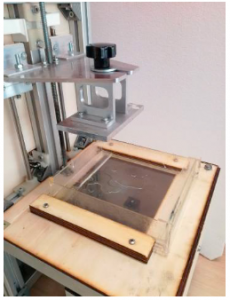Microfluidic systems are used to improve the analysis of biological and chemical processes by providing a more controlled fluid-handling environment. They are usually created in monolithic form through microfabrication techniques that limit designers to working in a two-dimensional space. But in a paper entitled “Fabrication of fluidic reactors by a customized 3D printing process,” a team of researchers explores the use of 3D printing to create microfluidic devices.
The researchers first used a Formlabs Form 2 SLA 3D printer to investigate the possibility of 3D printing microfluidic devices at low cost.
“3D printing allows the microreactors manufacturing with embedded 3D channels in a single part, without junctions or additional external piping interfaces, which could cause fluid losses,” the researchers state. “Potentialities and design challenges have been discussed and critical issues have been highlighted. Among these, the most limiting features resulted to be: the surface roughness, which is caused by the deposition of multiple successive layers and by the laser path and affects the optical clarity of the channels; the printer resolution, which impairs the channel size; the trapped resin, which can solidify and block the microchannels.”
 To overcome these limitations, the researchers developed a custom solution based on DLP-SLA technology. The design criteria for the 3D printer followed two main requirements:
To overcome these limitations, the researchers developed a custom solution based on DLP-SLA technology. The design criteria for the 3D printer followed two main requirements:
- the capability to vary the in-plane (xy) resolution, since the void size is constrained by this parameter
- the reduction of the moving stages in order to increase dimensional accuracy and surface finish
The 3D printer was created by assembling an off-the-shelf DLP projector equipped with a 1024 x 768 micromirror array, a mirror with a tilting axis adjustment, a 3D printing mechanism and a set of custom made mounts. Once the 3D printer was calibrated, a three-step printing process was designed to fabricate a transparent fluidic device. The first step involved producing the base part on the printing plate with a conventional printing procedure. The second printing step consisted of projecting on the bottom of the resin tank the image corresponding to the top part. Finally, the printed channels were syringed with isopropyl alcohol to rinse the unpolymerized resin and cured with UV post-processing.
“The 3D printing process is a trade-off between resolution, processing time and final model size,” the researchers conclude. “High-resolution systems can be usually obtained only for small working volumes. The proposed solution does not represent an exception since the working distance of the DLP projector can be varied thus modifying both resolution and printing size. However, projectors with a greater resolution could be used allowing to print smaller features without modifying the designed setup. Furthermore, the integration between a custom 3D printer and a specifically-designed resin could greatly increase the complexity of the manufacturable shapes. The developed 3D printer, indeed, could be further customized by substituting the DLP projector with a LED projection system with a spectrum tailored to take advantage of the specific resin.”
Authors of the paper include Sandro Barone, Marcello Braglia, Roberto Gabbrielli, Salvatore Miceli, Paolo Neri, Alessandro Paoli and Armando Viviano Razionale.
Discuss this and other 3D printing topics at 3DPrintBoard.com or share your thoughts below.
Subscribe to Our Email Newsletter
Stay up-to-date on all the latest news from the 3D printing industry and receive information and offers from third party vendors.
You May Also Like
3D Printing Unpeeled: New Arkema Material for HP, Saddle and Macro MEMS
A new Arkema material for MJF is said to reduce costs per part by up to 25% and have an 85% reusability ratio. HP 3D HR PA 12 S has been...
3D Printing News Briefs, January 20, 2024: FDM, LPBF, Underwater 3D Printer, Racing, & More
We’re starting off with a process certification in today’s 3D Printing News Briefs, and then moving on to research about solute trapping, laser powder bed fusion, and then moving on...
3D Printing Webinar and Event Roundup: December 3, 2023
We’ve got plenty of events and webinars coming up for you this week! Quickparts is having a Manufacturing Roadshow, America Makes is holding a Member Town Hall, Stratafest makes two...
Formnext 2023 Day Three: Slam Dunk
I’m high—high on trade show. I’ve met numerous new faces and reconnected with old friends, creating an absolutely wonderful atmosphere. The excitement is palpable over several emerging developments. The high...

































